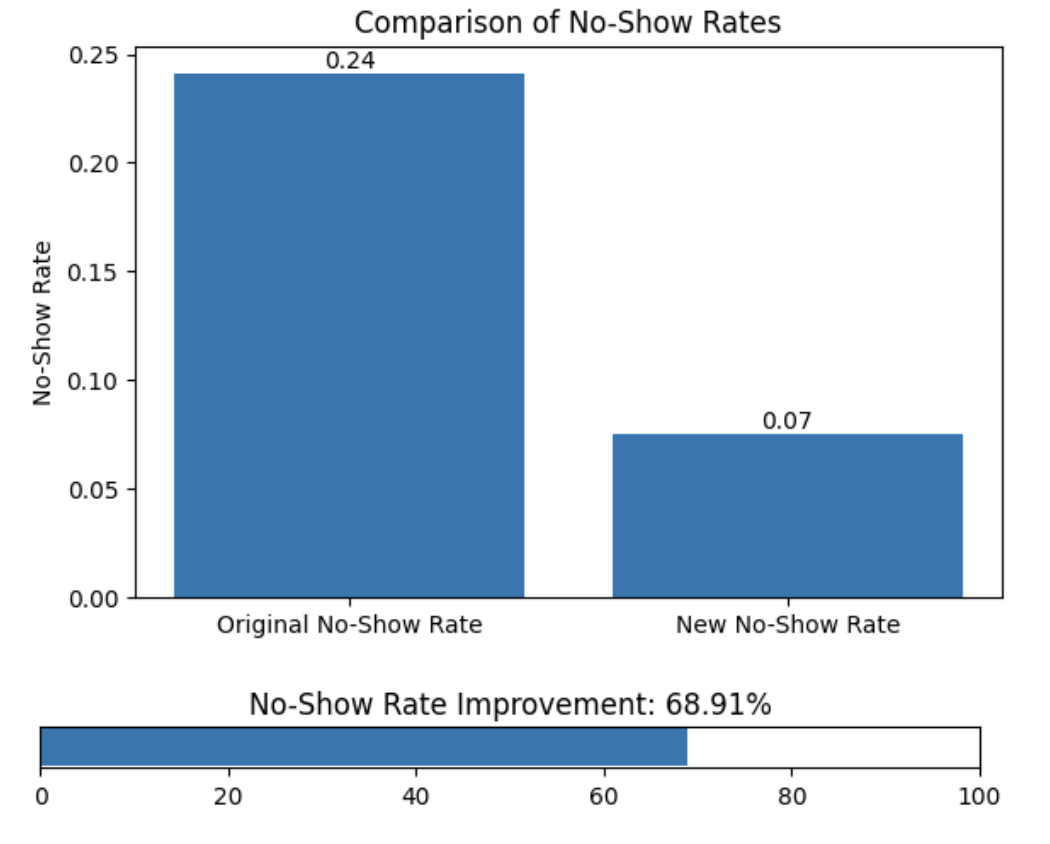Harvesting the Rewards: The Financial Upside of Patient Attendance

When it comes to healthcare, every missed appointment represents more than just an empty slot on the schedule—it’s a missed opportunity for care and a direct hit to the clinic’s bottom line. In our last post, we shared the results of our A/B test, revealing which reminder method most effectively reduced no-show rates. Now, let’s shift gears to explore the financial impact.
How much money did reducing no-shows save? What are the broader implications for clinic operations? In this post, we’ll break down the dollars and cents of lower no-show rates.
Turning No-Shows into Revenue
Let’s start with some quick math:
- Baseline No-Show Rate: Before implementing the A/B test, our clinic had an average no-show rate of 24.12%.
- Revenue Loss per No-Show: Each missed appointment costs the clinic $225 in lost revenue.
- Improved No-Show Rates: After implementing the best-performing reminder method (phone calls), the no-show rate dropped to 7.5%.
The Impact in Numbers
By reducing no-show rates, we avoided 350 missed appointments over the observation period. That translated to an additional $61,200 in revenue—simply by optimizing how we communicated with patients.

Breaking It Down by Reminder Type
Here’s how the revenue gained stacked up for each reminder group:
- Email Group: Limited improvement, resulting in an additional $6,120.
- SMS Group: Moderate improvement, adding $8,568.
- Phone Call Group: The largest reduction in no-shows, contributing $46,512 in revenue.
These figures highlight the tangible financial benefits of implementing the most effective reminder strategy.
Beyond Revenue: Operational Efficiency
Reducing no-show rates isn’t just about money—it also improves operational efficiency. Here’s how:
- Fewer Empty Slots: Staff and resources are used more effectively when patients show up as scheduled.
- Improved Patient Access: Fewer no-shows mean more opportunities for other patients to book appointments.
- Higher Staff Morale: A well-functioning schedule reduces stress for healthcare workers.
From Insights to Action
Our findings underscore the value of data-driven decision-making. For clinics looking to replicate this success, here’s a simple roadmap:
- Analyze No-Show Data: Understand your clinic’s baseline no-show rate and revenue loss.
- Experiment with Communication: Test different reminder methods to identify what works best for your patients.
- Implement Changes: Scale the most effective strategy and monitor its impact over time.
Next in the Series
In the final post of this series, we’ll reflect on the lessons learned and discuss how this A/B test can inspire data-driven solutions in other areas of healthcare and beyond. Stay tuned for the concluding chapter of our no-show journey!